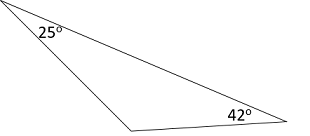What Is the MAP Practice Test?
The MAP test is a computer-adaptive assessment used across K–12 schools. It is a standardized test.This page offers free and premium MAP practice questions by grade, subject, and skill level — helping students improve scores and reduce test anxiety.
MAP Practice Tests by Grade (2025)
Try Free Sample Questions or Jump to Full Pack ➜
- Kindergarten–1st Grade – Math & Reading Warm-Up Questions
- 2nd–5th Grade – Enriched simutimed practice
- 6th–8th Grade – Advanced sample questions
- 9th–12th Grade – Full-length challenge sections
What Makes Our MAP Practice Different?
Other sites offer quizzes. We offer MAP test PrepPacks with full-length simulations, matching the real structure, scoring, and difficulty progression of the exam.
Download our comprehensive MAP Test Prep Guide PDF.
Free MAP Test Kindergarten Sample Questions
Free MAP Test 1st Grade Sample Questions
Join Our Family Membership
Save over $100 and get complete preparation for all of your family's upcoming exams
Create an Account
Unlock full access to our platform developed by experts
Add Multiple PrepPacks
Including material from all over our website
Create 3 Separate Profiles
Track and personalize each child’s individual progress
Free MAP Test 2nd Grade Sample Questions
Free MAP Test 3rd Grade Sample Questions
Free MAP Test 4th Grade Sample Questions
Free MAP Test 5th Grade Sample Questions
Free MAP Test 6th Grade Sample Questions
Free MAP Test 7th Grade Sample Questions
Free MAP Test 8th Grade Sample Questions
Free MAP Test 9th-12th Grade Sample Questions
MAP Test vs. STAAR Test
The MAP Growth Test and the STAAR Test serve different educational purposes with distinct features.
The NWEA MAP Test is an adaptive assessment that measures academic growth in subjects like math, reading, language usage, and science. It adjusts the difficulty of questions based on the student's responses, providing a personalized evaluation. This makes MAP testing unique as it helps track a child's academic progress over time. Many parents supplement this learning with maths sheets and reading comprehension exercises at home.
On the other hand, the STAAR Test is a standardized state assessment administered in schools around Texas. This assessment evaluates a child's knowledge in core subjects at the end of each grade level, and utilizing readily available sample questions can be an excellent way for students to familiarize themselves with the test format and content. Unlike MAP Growth, STAAR is not adaptive but is designed to measure specific state education standards and the overall performance of the education system. Understanding these differences can help parents and educators choose the right assessment to meet their child's school requirements and support their academic growth effectively.
Understanding the NWEA MAP Adaptive Test
One of the key elements of the NWEA MAP Test is its adaptive capabilities. The test adjusts the questions difficulty based on the student's responses in real time, simulating a dynamic approach. If your child answers a question correctly, the test will present more challenging questions to inquire their understanding of above grade levels..
This test is aligned to the Common Core State Standards, ensuring that it measures skills and knowledge relevant to your child's grade level. This adaptive interaction allows MAP Growth to measure academic progress more accurately than conventional tests. The format is beneficial in two ways: it prevents students from feeling discouraged by encountering questions beyond their understanding, and it also provides a detailed and nuanced picture of what the student knows. The MAP test is often used in international schools as either part of the entrance process or as interim testing to track student progress throughout the academic year
MAP Growth Test Scores
Scores for the NWEA MAP are reported using the RIT scale (Rasch unIT). The RIT scale is an equal-interval scale, like a ruler with inches. The student will not be graded on the percentage of questions answered correctly but on the level of questioning to which they progress. An RIT score indicates the level of questions that he or she is estimated to answer correctly 50% of the time.
Since all grades are scored according to an objective indication of progress from kindergarten through high school, higher grades will naturally score higher; the same score that is advanced for 3rd grade would be average for 5th grade. This system allows schools and students to measure progress and academic growth from year to year. Read more about how the MAP test is scored and how to interpret your child's progress on our MAP Growth Scores page.
MAP Test Guidance for Teachers & Tutors
If you are a teacher or tutor and need to prepare your students for the NWEA MAP test, you can find a lot of helpful information, tips, and special offers on our MAP Growth page for teachers and our Teachers Membership page!
MAP Test Tips
The most important tip is to test prep as much as you can, but not more than you can handle. For more detailed and inciteful tips to help you maximize your time and capabilities in preparing for the MAP test, view our MAP Growth Tips page.
You can also Watch this short video to learn everything you need to know about the NWEA MAP Growth + get exclusive MAP tips:







